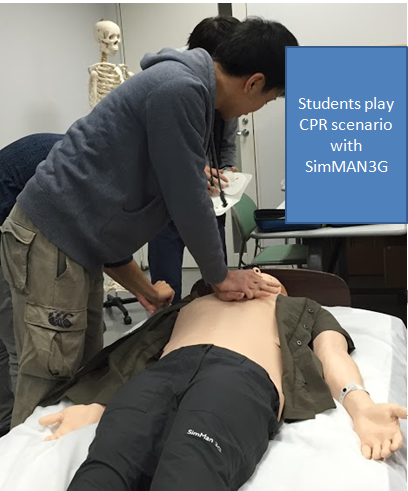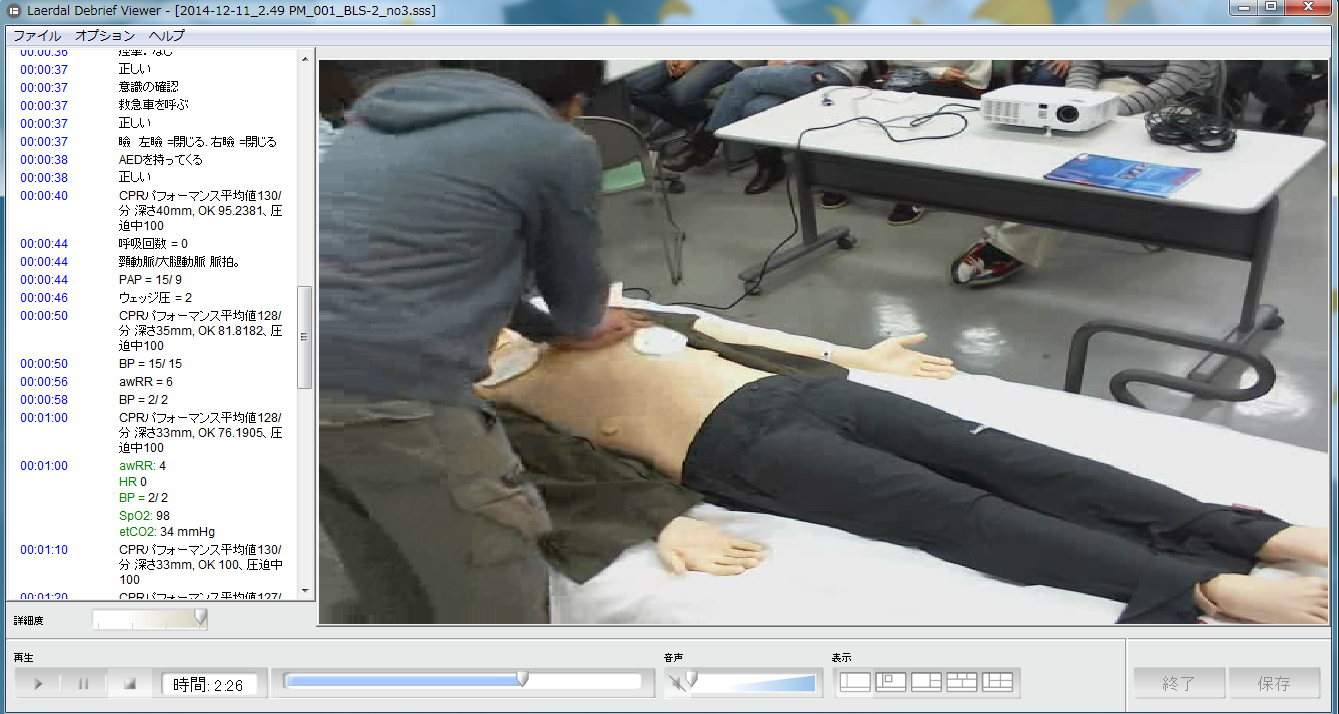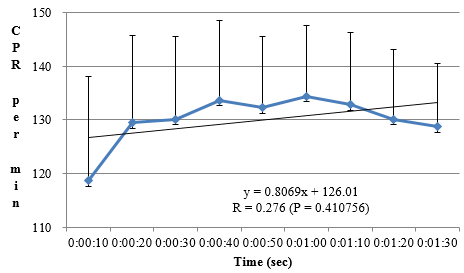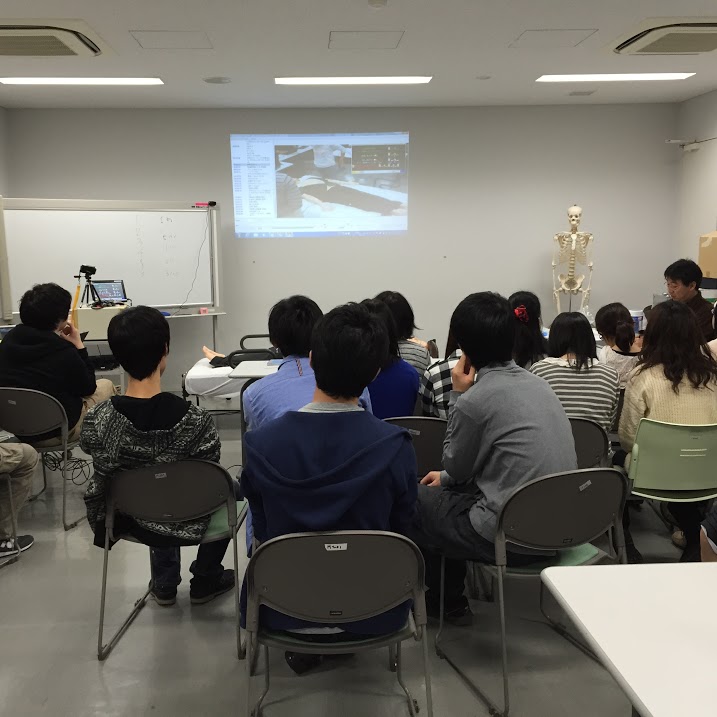| ePOSTER | ||
| Theme: 9BB Simulation 1 |

|
| Abstract Title |
 |
|
| Evaluation of chest compression during cardiopulmonary resuscitation using a high-fidelity simulator | ||

|
Authors: |
Kai Ishida Kazuya Imaizumi Ryoma Seto Hiroshi Tsumura Takashi Okubo |
Institutions: | Division of Healthcare Informatics, Faculty of Healthcare, Tokyo Healthcare University - Japan |
Background
- High-fidelity simulators are increasingly being used in healthcare education.
- At our university, SimMan3G systems (Leardal) had introduced and physiology is taught to students for the purpose of learning basic life support (BLS).
- We report assessment of BLS using a SimMan3G performed by our students.
 Fig.1 SimMan3G system
Fig.1 SimMan3G system
Summary of Work
- The subjects were 12 first-year students majoring in healthcare informatics.
- After being taught how to perform cardiopulmonary resuscitation (CPR), the students then practiced CPR and finally were evaluated in a BLS scenario.
Scenario: An adult male suddenly becomes unconscious and goes into cardiac arrest. Students were asked to help someone and perform CPR for 90 seconds when AED arrives.
- CPR performance was assessed using log data and videotaped frames from the high-fidelity simulator and student peer review.

Fig.2 Students play CPR scenario (during the compression)

Fig.3 Videotaped frame for evaluation and debriefing
Summary of Results
- The compression depth decreased from 45 mm to 35 mm on average from the start of CPR to 90 seconds later.
- Compression depth and the time of performance of CPR showed a strong negative correlation (r = -0.823, P = 0.00186, Pearson correlation coefficient).
- The mean number of compressions was 130 per minute during CPR and the number of compressions was only weakly correlated with the time of CPR (r = 0.276, P = 0.410756, Pearson correlation coefficient).
- Student peer reviews for all sessions indicated that “students performed CPR precisely”.

Fig.4 Change of compression depth (N = 12)

Fig.5 Change of time performance of CPR (N = 12)
Conclusion
- As time passed during CPR, the number of compressions remained almost constant, but chest depth decreased gradually.
- Students learned the correct compression rate, but that the depth achieved was still poor.
- The peer evaluation of the chest compression depth was incorrect.
- The quantitative evaluation used in the study is thought to be effective for BLS training.

Fig.6 In the debriefing (using videotaped and CPR results)
Designed & Managed by Innovative Technology®
 Send Email
Send Email